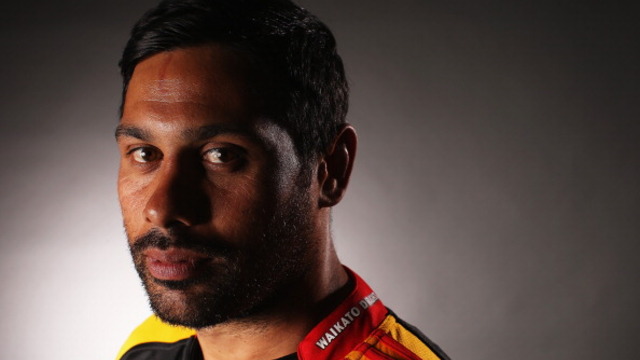Rugby fashions, like fashions in other areas of life, often work in cycles without obvious rhyme or reason. There may be no objective justification for such trends, but vogues in the top tier are nonetheless too frequently followed and reinforced unquestioningly at the lower levels of the game.
From restarts, the latest fashion has been to kick long, at least as far as the opponent’s 22m line. Some statistical databases have suggested that 96% of all restarts may be directed into this area.
Kick-offs out to the chasing team’s right, targeting the zone just beyond the opposition 22m line have been especially popular. They encourage use of the dominant (right) hand on chase, and tend to engage the ‘wrong’ foot for the opposition clearance kick to the left side-line. For the kicking side, there is the positive prospect of an attacking lineout around the opponent’s 40m line in view on the next sequence of play.
It was not always thus. The great double World Cup-winning All Blacks of 2011-2015 looked to get the ball back immediately from short restarts – and reclaim attacking momentum with it. They wanted to keep tempo high, keep the ball in play and avoid sequences which led naturally to another set-piece.
Two classic examples occurred at the beginning of the 2013 Rugby Championship game between South Africa and New Zealand at Ellis Park in Johannesburg. From the opening kick-off, New Zealand split their captain Kieran Read to the wide right and second row Brodie Retallick to the extreme left and aimed to hit either one with short, flat kick-offs travelling just beyond the 40m line.
On the opening kick-off, #10 Aaron Cruden picked out Retallick on the left corner https://youtu.be/Hyl3ovPNMpA?t=131 , with the opening attacking sequence lasting for over one and half minutes and pressing the Springboks back to their own goal-line. The second restart shifted the point-of-attack to Read on the right touch-line and was even more conclusive https://youtu.be/Hyl3ovPNMpA?t=830 . Within four phases and 30 seconds of reclaiming the restart, Ben Smith had scored New Zealand’s first try of the game.
The recent Super Rugby Pacific encounter between the Crusaders and the Blues illustrated the enduring benefits of shorter kick-offs to the corner in the ‘flats’, from the boot of an accurate kicker (Beauden Barrett) to an outstanding aerial athlete (Caleb Clarke) on chase. The Blues were not a slave to fashion and reaped the rewards from it.
Their opening gambit occurred in the 32nd minute:
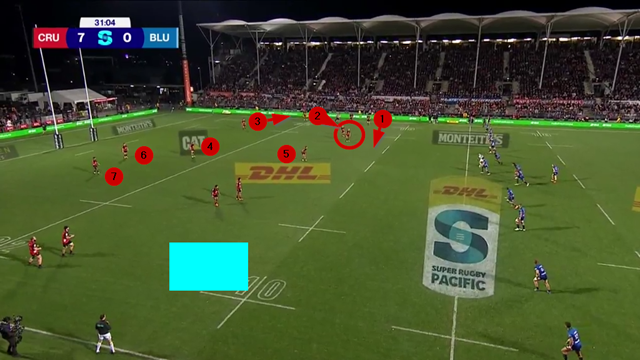
Before the kick is made, the Crusaders’ shape on the receipt is clearly biased towards ‘the trend’ – the expectation of a kick-off deep and to their left. There is a two-man pod and three other players in the immediate area, but only a single two-man pod on the opposite side. That means a target area (in the blue rectangle) has been presented.
The Blues promptly go after it with a perfect flat kick to the corner by Barrett, caught in full flow by Clarke. On the very next play, a split down the middle of the Crusaders’ defence has appeared:
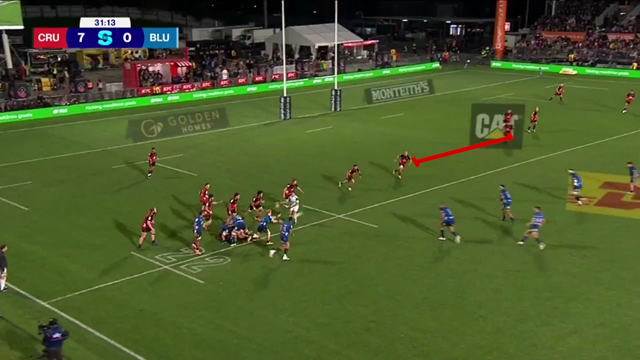
There is an inviting gap on a line straight towards the posts, if the Blues can move the ball into that area decisively.
The same pattern was repeated on the opening kick-off of the second half:
The Crusaders are still fairly thin out to their right at the point-of-receipt, leaving Clarke in a straight, one-on-one jumping contest with a second row (Quinten Strange) without his booster (Oli Jaeger) in support. It is contest where the odds favour the chaser, and Clarke’s momentum after the catch once again takes him all the way to the red-and-black 22m line.
The scenario after ball has been delivered from the first ruck is a familiar one too:

The first four defenders are in place, but there is still a large gap between them and other defensive players still making their way over from the opposite side of the field. Caleb Clarke also won a third ‘first touch’ from the same situation only a few minutes later, although he was unable to make a clean catch and drive forward deep into home territory on that occasion.
Summary
The deep restart into (right) corner has been established as the staple for most professional teams when kicking off, but the trend need not become automatic. The best team of the professional era, the All Blacks @2010-2017, preferred to kick short to the corners and win the ball back immediately. Spot your best aerial athletes in both tram-lines and kick flat to limit the response-time for the defence. The unstructured phase attack which follows may suit a movement-based side better than the midfield lineout launch which is so often the outcome of the longer restart. You pay your money, and you make your choice.
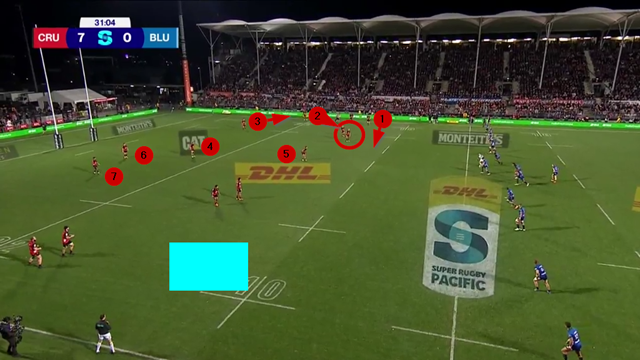




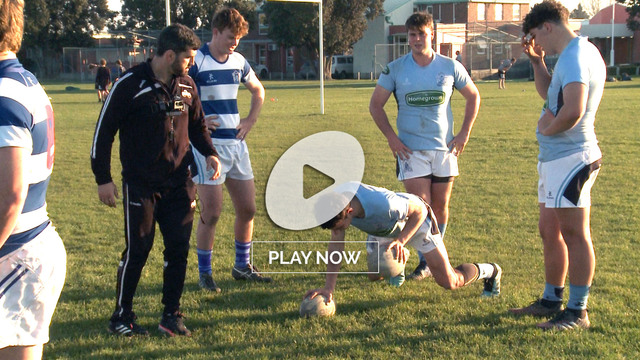
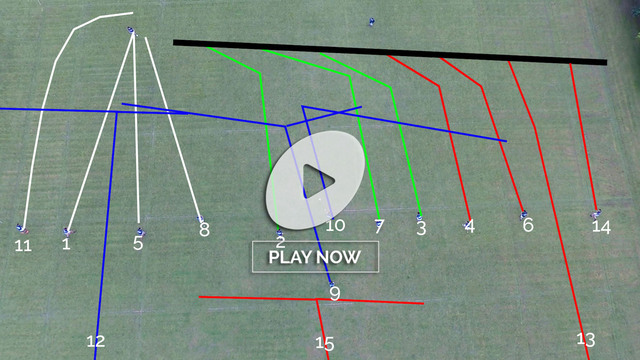
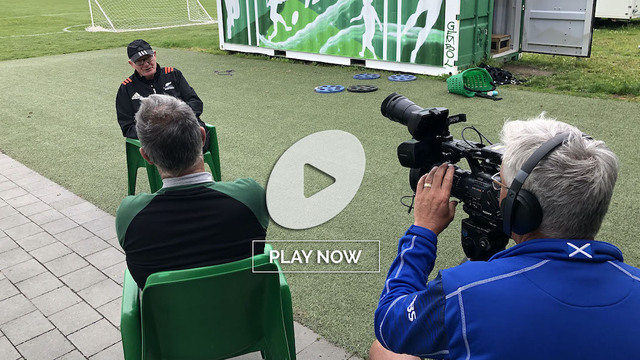
.jpg)
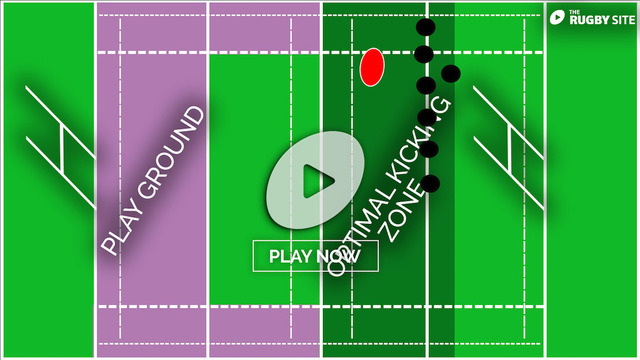
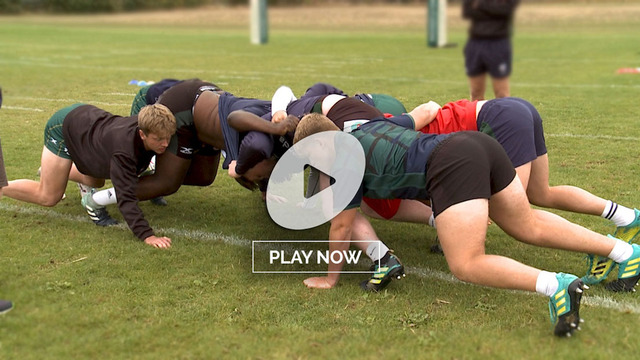
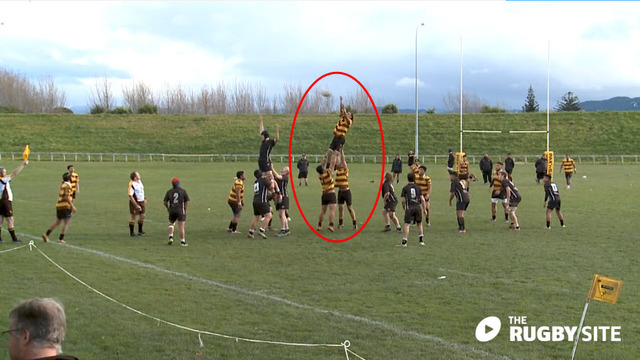
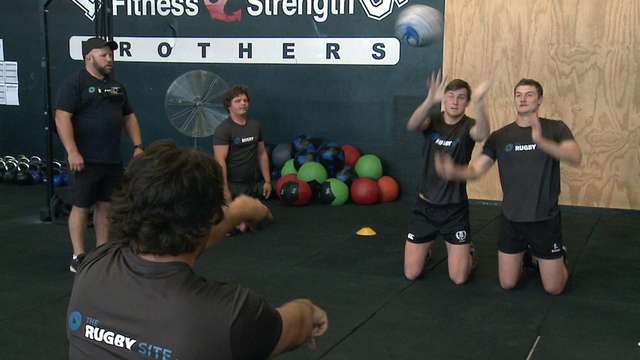
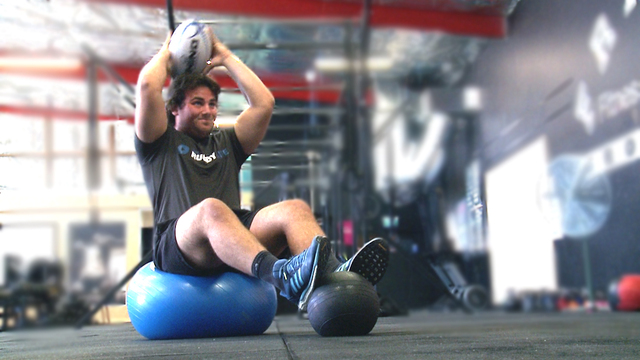
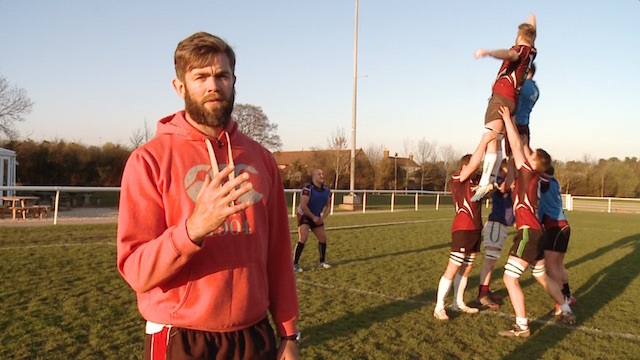
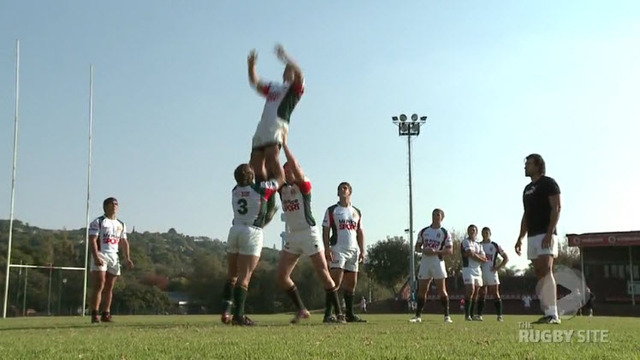
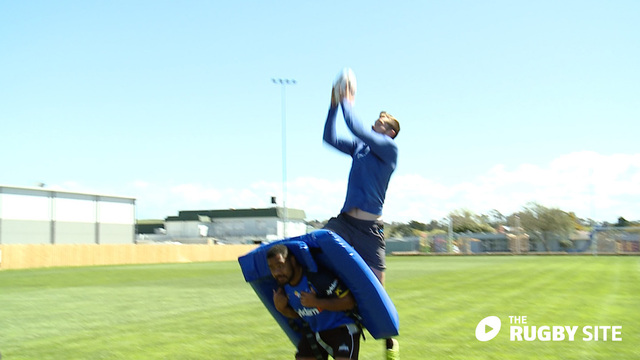
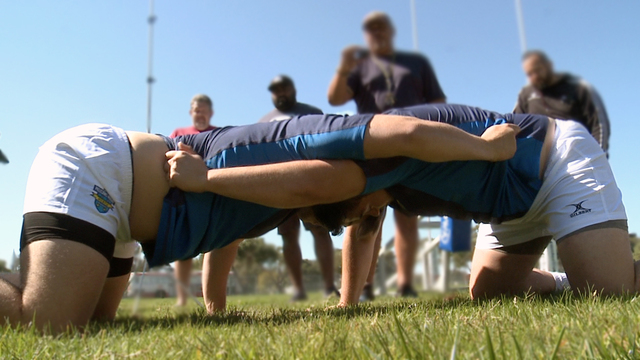
.jpg)
